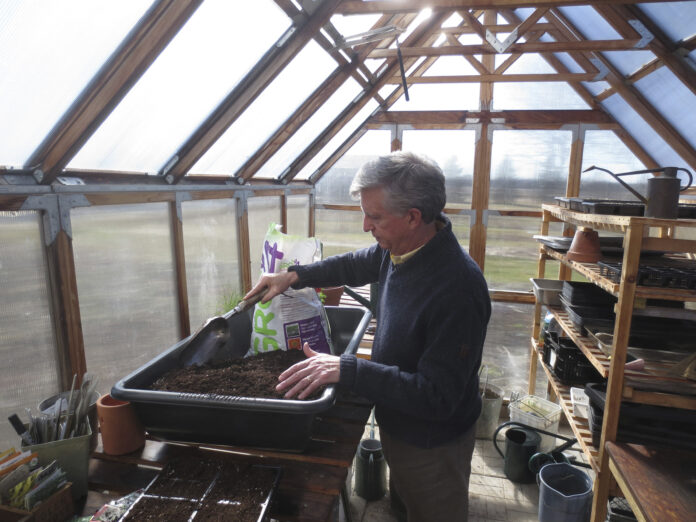by Mark and Ben Cullen
It is planting time. The sun is getting stronger and the days longer. You feel the urge to get outside and grow something, but what? And where?
If your space is limited or you just want to enhance an intimate outdoor space, chances are a container full of soil will fit the bill.
Here is what you need to know to produce the best container garden:
1. Drainage. Whether you are planting in a pot or an old boot, that water must go somewhere, and it is important that excess can escape. Most pots have drainage holes for excess water to drain through. Use a saucer to avoid staining your outdoor carpet or cedar deck. As water accumulates in the saucer, remove it so that the soil in the pot does not continue to absorb and cause root rot. An old leather boot will dry out, but a rubber boot will need holes drilled in the bottom.
2. Soil. Use good quality potting mix. Never use soil from your garden. It contains weed seeds and generally is too heavy for optimum plant performance in a container. There are many cheap potting mixes on the market – generally you will get what you pay for. Never plant in last year’s potting soil which can harbour fungus and insects. Put that in your garden or give it to someone with a garden where it will do no harm.
3. Volume. The larger the pot, window box, hanging basket or container, the better plants perform. There will be many attractive offers by retailers this month for eight- and ten-inch plastic hanging baskets full of colour. Many are greenhouse fresh, affordable specimens: eye candy that will be hard to resist. These are great for planting out in the garden or repotting into a larger container for an instant splash of colour. They are poor candidates for a summer-long season of performance in the original pot/basket due to a lack of soil volume. The best performing plants in hanging baskets are planted in containers 12 inches and larger. Also, the larger the container, the less frequent watering.
4. Not all pots are equal. Our list, from best to worst choices for plant performance: clay, wood, biodegradable coir or peat fiber, plastic, ceramic. The difference? Breathability. The ability of the container to respire moisture through its walls. Clay, wood, and natural fiber pots exchange the moisture they absorb from soil for oxygen. This constant exchange is good for plant root development. Plastic and ceramic can work fine, but they do not have this feature. If you are pulling last year’s pots or containers out of storage for use this season, be sure to give them a good scrub with a stiff brush and soapy water.
If they are wooden, check them for rot to determine if they will last one more season and stain them if necessary.
5. Do Not Leave Your Plants on the Rocks. There has been much written about the benefits of using broken clay pots or gravel at the bottom of a pot, covering the drainage hole. However, the Royal Horticultural Society in the U.K. recently determined that this additional drainage is not beneficial. More important are the drainage holes: make sure there are enough of them to allow water to move freely.
6. See the light. Remember that plants have light requirements. Whether they are in your garden or a container, consider how much sun a plant requires to perform at its best and keep in mind that the sun is strongest in the afternoon. A west facing balcony can literally cook a plant and dry it out before you get home from work at day’s end, where an east facing one, receiving the cool morning sun, is much more conducive to plant growth for many plants. A tuberous begonia will enjoy eastern exposure, while a zinnia or culinary herb will thrive in the west.
Piece by piece, pot by pot, containers are a great way to bring more gardening into your life.
Mark Cullen is an expert gardener, author, broadcaster, tree advocate and Member of the Order of Canada. His son Ben is a fourth-generation urban gardener and graduate of University of Guelph and Dalhousie University in Halifax. Follow them at markcullen.com, @markcullengardening, and on Facebook.


